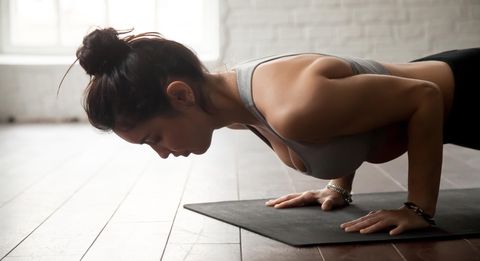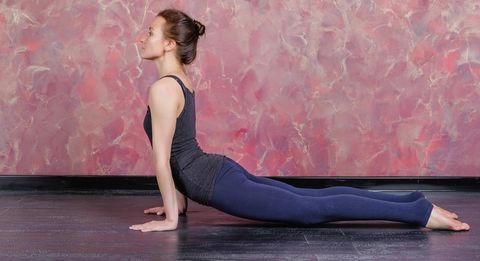3 yoga poses you’re probably doing wrong
Make these tweaks and improve your yoga form
If your New Year’s resolution was to start a yoga routine (and stick to it), you’re probably super into your downward dogs and tree poses by now. But if you’re a yoga newbie, there are some common alignment mistakes you could be making that may actually be reversing the benefits of a yoga practice – namely, causing more postural imbalances and injuries.
The most common error? Getting competitive in your yoga class and trying to do the more advanced poses, rather than taking your time and building up your strength. “We all do it”, says Kirsty Gallagher, an expert yoga teacher who has taught at over 75 retreats. “But it’s far better to excel at a beginner’s pose, rather than try to push yourself and feel terrible doing the hardest variation of the pose”.
She adds:”I teach in my yoga classes that it’s about feeling and intention rather than how advanced you are – if you’re clinging on for dear life in a handstand, you’ve lost everything that’s yoga in that one pose.”
So how to improve your technique so you’re getting the most out of your yoga class? Avoid these common beginner’s mistakes with these popular poses. But don’t stress too much about being ‘perfect’, as Kirsty says: “It’s ok to not have perfected every yoga move, as long by the end of your practice your body feels better, you’re winning all round”.
1.DOWNWARD FACING DOG

“The majority of down dogs are done incorrectly because of postural misalignment and tight muscles. As you progress in yoga the down dog gets more comfortable because and body gets less tight and open – but before you reach this stage, tight shoulders and hamstrings can be one of the biggest deal breaker in a down dog.”
The issue? People with tight muscles initially try to straighten their legs which causes a rounding in the upper back, rather than bending the knees so you can lift up the back of the hipbones. Or, they bring all the weight into the hands and the arms because the shoulders can’t wrap around enough so you get a rounded back sensation – when you want to be straight and aligned.
How to fix it: “I always encourage everyone to keep the knees bent and to not try and get the heels on the floor as that encourages the rounding sensation” Kirsty advises.
2. CHATURANGA

The main issue with this position, Kirsty says, is that beginners don’t have the strength to perform the full version of this position. “A lot of people drop their shoulders and stick their bum up” she says. “They compress the front shoulder and put weight on the front shoulder verses the triceps and core, which is just too much on that part of the upper body.” Instructors also say you need to do the “knees chest chin” movement – and this doesn’t necessarily help build strength in the places you need for this position – the triceps and core.
How to fix it: Drop the knees straight on to the floor from plank, keep your shoulders lifted and then start to lower your body down to the floor.
3. COBRA UP DOG.

“This is a massive one” Kirsty says. “People tend to just push into their arms – because they haven’t got that openness in the middle of their back. Some even flip their head back in the neck! Which isn’t good for your alignment”.
How to fix it: Stay low in the beginning while you build strength and you are opening your middle back – then when you have the strength, come through avoiding pushing your hands into floor and rolling shoulders and hunching – aim to get your chest and upper back nice and open.



